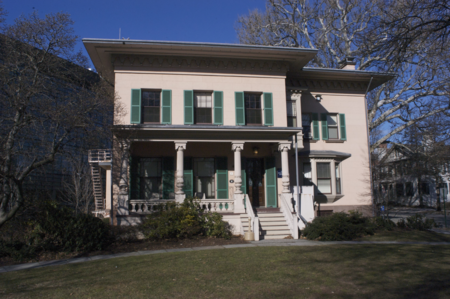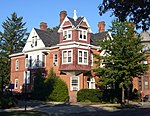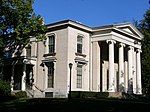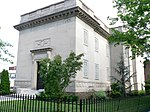James Dwight Dana House
1849 establishments in ConnecticutHistoric district contributing properties in ConnecticutHouses completed in 1849Houses completed in 1868Houses in New Haven, Connecticut ... and 7 more
Houses on the National Register of Historic Places in ConnecticutItalianate architecture in ConnecticutNRHP infobox with nocatNational Historic Landmarks in ConnecticutNational Register of Historic Places in New Haven, ConnecticutSilliman familyYale University buildings

The James Dwight Dana House, also known as the Dana House, is a historic 19th-century Italianate house at 24 Hillhouse Avenue in New Haven, Connecticut, in the United States. This building, designed by New Haven architect Henry Austin, was the home of Yale University geology professor James Dwight Dana (1813–95). It was declared a National Historic Landmark in 1965 for its association with Dana, who produced the first published works emphasizing that the study of geology was a much broader discipline than the examination of individual rocks.
Excerpt from the Wikipedia article James Dwight Dana House (License: CC BY-SA 3.0, Authors, Images).James Dwight Dana House
Hillhouse Avenue, New Haven
Geographical coordinates (GPS) Address External links Nearby Places Show on map
Geographical coordinates (GPS)
| Latitude | Longitude |
|---|---|
| N 41.3134 ° | E -72.9241 ° |
Address
James Dwight Dana House
Hillhouse Avenue 24
06511 New Haven
Connecticut, United States
Open on Google Maps








